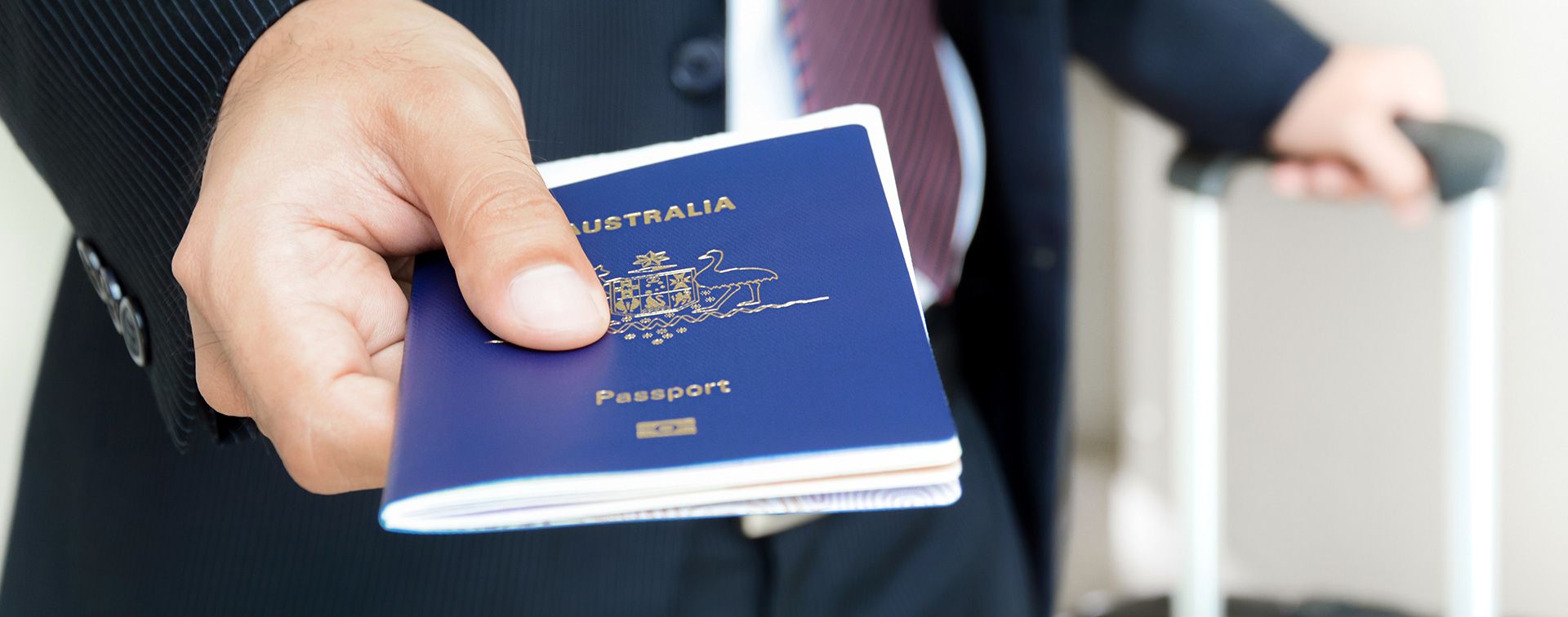
Oriel Morrison is one of Asia’s most well-known business journalists and the founder of Kaida Corp.
Australia and New Zealand have been hugely proficient in containing the spread of Covid-19, largely because doors to the island nations were slammed shut early in the pandemic. But the slow pace of vaccinations and the spread of the highly transmissible Delta variant are overshadowing their earlier success. Both countries depend highly on immigration, trade, and global populations, putting their governments under pressure to find ways of opening up.
Look for good news on the economic front, and you will find it. After a sluggish 12 months, the IMF has joined the ranks of the OECD, the European Commission, and the Federal Reserve in upgrading economic forecasts.
If you want strong economic growth, look no further than the “lucky country”, a term coined by Australian intellectual Donald Horne, who wrote in 1964:
"Australia is a lucky country run mainly by second-rate people who share its luck. It lives on other people's ideas, and, although its ordinary people are adaptable, most of its leaders (in all fields) so lack curiosity about the events that surround them that they are often taken by surprise."
Not so relevant today, Donald, with Australia taking the third spot in EY’s global Covid-19 economic index while New Zealand is number one. The two Antipodean island nations have also taken two of the top three spots in Bloomberg’s latest Covid Resilience Ranking.
A large part of the region’s success comes down to border closures. Australia and New Zealand both shut their borders early in the pandemic. And for many, this ‘island nation’ mentality is not a bad thing. Rather, it’s considered to be the price they have to pay to ensure that Covid-19 stays away.

Voluntary isolation comes at a cost, however, because population growth is one of the key drivers of Australia’s economic growth. The latest Federal Budget has forecast that net overseas migration will be negative 72,000 in the 2020–2021 financial year. This negative trend is set to continue.
According to the budget papers, Australia’s international borders are likely to remain closed until mid-2022 and economists agree that a return to 3% growth is unlikely without immigration. EY has done the math, calculating that Australia’s economy is losing AUD 7.6 billion a month from restricting travel. The Treasury’s 2021 Intergenerational Report predicts that the country will be stuck in debt and deficit for the next 40 years unless it boosts skilled migration, workforce participation, and productivity.
As for New Zealand, net migration fell to just 6,600 in the year to end-March after it closed its borders, down from a record 91,900. Bad news for a country that relies on attracting skilled workers and foreign investment. Its planned reopening of the border is set for January 2022.
The decision to leave borders closed can be argued this way; that the first economic lever to pull, to boost growth and job creation, is to increase the rate of vaccinations.
Not only do the Australian and New Zealand economies depend on trade and immigration, but they both also have global populations. The cost of remaining closed — a potential double whammy — is prolonged economic loss and social dislocation.
In addition, the science behind SARS Cov-2 shows that the ever-evolving strains of Covid-19 mean it won’t disappear.
Medical experts agree that the answer to opening borders is vaccinating travelers. Questions remain, however, over how effective vaccines will be against new variants, and how long vaccine protection will last. Both countries have been relatively slow to immunize their populations and are well below the global average in the OECD rollout tally.
The Australian Government now expects the adult population to be fully vaccinated by late March 2022. This is phase one of a four-phase plan, which also sees the international arrivals cap reduced by 50% until the end of 2021 due to the risks of the Delta variant. To enter phase two, where the international arrivals cap would be restored for unvaccinated travelers, Australia would need to reach a vaccination threshold.
New Zealand’s government hopes to have the entire willing adult population vaccinated by the end of the year, but there is some risk that vaccine supply bottlenecks and the level of uptake may derail those timing expectations.
According to Australia’s Prime Minister, Scott Morrison, the next step is for fully vaccinated Australians to be able to travel freely around Australia and to ‘safe’ countries with low rates of infection. Returning travelers would likely face some form of quarantine. New Zealand is looking at whether to open up before its full vaccination rollout is complete or to allow vaccine passport arrangements.
Australia and New Zealand’s two major airlines have been trialing digital passport apps that store test results and immunization records, which would function as vaccine passports of sorts.
But while vaccine passports could speed up the opening of borders, they are not a comprehensive solution. Given the geopolitical environment, experts deem it unlikely that Western countries such as Australia and New Zealand will recognize China’s Covid vaccines, and vice versa.
And anxieties over the potential for vaccine-resistant strains of the virus remain, which have been underlined by the highly contagious Delta variant first discovered in India.
In just a month, the WHO has gone from designating Delta as a Variant of Concern, to calling it the most transmissible variant yet. Already in 92 countries, Delta is on track to become the most dominant strain globally. And it has gained a foothold in Australia, with cases reported in most states. At the time of writing, almost half of Australians are in lockdown.
Hardly surprising then, that the recently opened travel bubble between Australia and New Zealand was temporarily closed, with new restrictions in place on reopening, including Covid testing pre-travel, and only allowing travel from certain states in Australia.
It remains to be seen what the Delta strain will do to future plans. Both Antipodean countries were exploring the possibility of expanding their bubbles to include the Pacific Islands — New Zealand’s government was planning to lead trade delegations later this year to reconnect with other countries, and Australian officials were looking at several Asian countries, including Japan, Singapore, South Korea, and Taiwan.
Even so, with border openings more likely than not, governments in both Australia and New Zealand are focusing on attracting new businesses and talent.
Australia’s skilled visa system has recently been overhauled owing to concerns over a shortage of skilled workers. The global talent category has dropped to 11,000 places for the 2021–22 financial year, as has the number of business innovation visas. At the same time, the visa quota for employer-sponsored migrants has been lifted to 23,500. Other changes include increasing the quota of regional visas to 13,150 and making an extra 1,000 skilled independent visas available.
The New Zealand Government is shifting the focus of its immigration policies towards high-skilled migrants and away from low-skilled work. Two border exemptions are being set up to enable personnel from international organizations to visit New Zealand over the next 12 months to boost investment and attract talented workers. More than 200 wealthy international investors have already been permitted to enter the country under the exceptions.
There is no doubt that there is an economic need to reopen borders. And it is, and should be, balanced against the known and as yet unknown health risks surrounding SARS-CoV2.
Governments in Australia and New Zealand are working on comprehensive solutions including vaccinating populations, exploring the possibility of vaccine passports, and building up a psychological readiness to welcome others into the perceived safety of their shores.
References
“2021 Intergenerational Report.” Treasury.gov.au. Australian Government, June 28, 2021.
Anders, G. “Why Declining Migration Stalls Economic Recovery.” In The Black Magazine. CPA Australia Ltd, May 1, 2021.
“Australia Flexes Muscle in Talent War with Newest Immigration Program.” Businesswire. Berkshire Hathaway Incorporated, April 21, 2021.
Barker, B, Masters, J, and McMenamin, J. “Quarterly Update, Q4 2020: A Performance to Be Envied.” EY Australia. Ernst & Young Global Limited, March 3, 2021.
Bennett + Co. “The ‘India Travel Ban’ Case: What Is It All About? A Legal Perspective.” Lexology. Lexology, May 18, 2021.
Bowdon, T, and Thorpe, J. “Australia Rebooted.” PwC Australia. PricewaterhouseCoopers, 2020.
“Budget 2021-22.” Australian Government, May 2021.
Carville, J. “It’s the Economy, Stupid". Political Dictionary. Political Dictionary, August 10, 2020.
Chapman, A. “‘Roadmap’ to Reopening International Travel Hinges on Three ‘Principles’, Health Minister Says.” 7News. Seven Network, May 10, 2021.
“Coronavirus Disease (COVID-19) Pandemic.” World Health Organization.
“COVID-19 Data Explorer.” Our World in Data. Global Change Data Lab. Accessed July 5, 2021.
“Covid-19 Vaccines.” Ministry of Health New Zealand.
Davey, M. “‘Politics Rules’: Australia’s International Travel Ban Not Based on Science, Health Experts Say.” The Guardian. Guardian Media Group, May 10, 2021.
“Global Talent Visa Program.” Department of Home Affairs Australia.
Hendry J, “Government Expands Global Tech Talent Visa Program after Tripling Intake.” IT News. IT News, Jan 20, 2021.
Hewitt, J. “Australia’s State of Suspended Animation on Borders.” Financial Review. The Australian Financial Review, May 16, 2021.
Hong, J, Chang, R, and Varley, K. “The Covid Resilience Ranking”. Bloomberg. Bloomberg L.P., May 25, 2021.
Horne, D. The Lucky Country. Penguin Books Australia. Penguin Books, 1964.
Masters, J. “How Does Australia Emerge from “The Great Lockdown”.” EY Australia. Ernst & Young Global Limited, May 25, 2020.
Masters, J, and McMenamin, J. “Team Australia Is in a Top Spot, So Why Are ‘Animal Spirits’ for Investment Still Missing?” EY Australia. Ernst & Young Global Limited, March 15, 2021.
McClure, T. “‘No Roadmap’: New Zealand Mulls Reopening Options after a Year of Closed Borders.” The Guardian. Guardian Media Group, May 14, 2021.
Menon, P. “New Zealand PM Sets Out Plans to Re-Connect with Post-pandemic World.” Reuters. Thompson Reuters, May 13, 2021.
Menon, P. “New Zealand to Partially Restart Travel Bubble with Australia.” SMH. The Sydney Morning Herald, June 29, 2021.
Nash, S, and Faafoi, K. “Immigration Reset. Setting the Scene”. Beehive. New Zealand Government, May 17, 2021.
“National Cabinet Statement.” pm.gov.au. Prime Minister of Australia, July 2, 2021.
“New Zealand Safe Travel Zone.” Department of Home Affairs. Australian Government, May 2021.
“New Zealand to Resume Australia “Travel Bubble” as Sydney COVID Threat Eases.” Reuters. Thompson Reuters, May 8, 2021.
O'Brien, E, Che, C, Leigh, K, Hong, J, and Chrysoloras, N. “When It Comes to a Travel Restart All Vaccines Are Not Equal.” Bloomberg. Bloomberg L.P., April 25, 2021.
OECD Economic Outlook, Interim Report March 2021. OECD Publishing, Paris, 2021.
Platt, C. “World's Most Powerful Passports 2021 Named but International Travel Still Restricted.” Traveller. Traveller, April 14, 2021.
“Quarterly Economic Outlook: Global and Australian Forecasts – March 2021.” KPMG Australia. KPMG International Limited, March 19, 2021.
Sapsted, D. “Race for Global Tech Talent Heats up.” Relocate Magazine. Relocate Global, April 23, 2021.
Soutphommasane, T, and Stears, M. “Australia Risks Becoming a Hermit Nation. Here’s a Five-Step Road-Map to Reopen Our Borders Safely.” Canberra Weekly. Canberra Weekly, May 17, 2021.
Stats NZ. “New Zealand Citizens Drive Net Migration Gain.” March 15, 2021.
“Tracking SARS-CoV-2 Variants.” World Health Organization.
“Travel from New Zealand to the Cook Islands — Quarantine-Free Travel.” Unite Against Covid-19. New Zealand Government.
Treasurer Josh Frydenburg. ABC Insiders. ABC News, May 16, 2021.
“Why Australia: Benchmark Report 2021.” Austrade. Austrade, 2021.
“World Economic Outlook: Managing Divergent Recoveries.” IMF. International Monetary Fund, April 2021.
“World Economic Outlook Update, January 2021: Policy Support and Vaccines Expected to Lift Activity.” IMF. International Monetary Fund, January 2021.
Wright, S. “Global Talent Migrants Cut, Skilled Migrants up as Calls Grow for Reform.” The Sydney Morning Herald, May 30, 2021
Zagon, C. “Coronavirus Vaccine Passports under Consideration in Australia Amid International Travel Hopes.” 9News. Nine Digital, May 10, 2021.